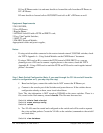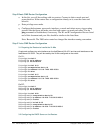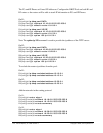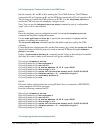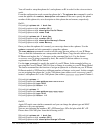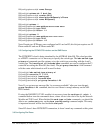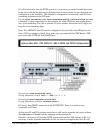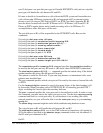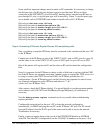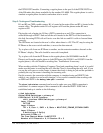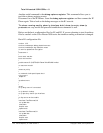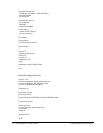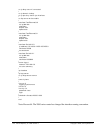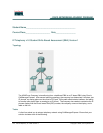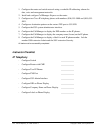
147 - 165 IP Telephony v1.0 SBA Version 1: Copyright © 2005, Cisco Systems, Inc.
need 2 dial-peers: one pots dial-peer type (will handle POTS/PSTN calls) and one voip dial-
peer type (will handle the calls between R1 and R2).
R1 must to be able to forward/receive calls to/from the POTS system and forward/receive
calls to/from other IP Phones (registered at R1 and registered at R2) or internal regular
phones as well (if using an FXS card on R1/R2, see IPTX Case Study Appendix-B). R2
must be able to forward calls from R2 IP Phones to R1’s IP Phones, calls from R2’s IP
Phones to PSTN regular phones and to handle incoming calls to its IP Phones. To
accomplish these tasks, dial-peers will be used.
The pots dial-peer at R1 will be responsible for the PSTN/POTS calls. Here are the
commands:
R1(config)# dial-peer voice 100 pots
R1(config-dial-peer)# translation-profile incoming DID
R1(config-dial-peer)# destination-pattern 9[2-9]......
R1(config-dial-peer)# incoming called-number .
R1(config-dial-peer)# direct-inward-dial
R1(config-dial-peer)# forward-digits 7
R1(config-dial-peer)# port 1/0/0:23
R1(config)# dial-peer voice 200 voip
R1(config-dial-peer)# destination-pattern 502.
R1(config-dial-peer)# session target ipv4:192.168.0.2
The translation-profile incoming DID command specifies the translation-profile to
be used by the dial-peer and only R1 needs it. (R2 doesn’t have POTS/PSTN connection)
The destination-pattern 9[2-9]...... command specifies the match string. If the dialed
number matches this string, the dial-peer will be used.
This pattern is useful for local calls. If you want long distance or international calls, more
patterns must be added here.
The port command specifies which voice port will be used by the router to forward the calls
to PSTN.
Use the
forward-digits command to specify how many digits, of the dialed number, will
be forwarded. When forwarding calls to PSTN/POTS, R1 is forwarding just the PSTN 7
digits, excluding the 9 used to gain the secondary dial tone.
The port command specifies the voice-port used to forward/receive calls. In order to issue
this command, you must choose the right voice-port to use. Use the show running-config
command and look for a voice-port entry. If your hardware is not working (like cards,
network modules, etc) you will not be able to see the voice-port entry on your running-
config
file.
The show diag command might be useful while troubleshooting hardware issues.
The voip dial-peer at R1 will handle the calls between R1 and R2.
The
destination-pattern 502. says to the CME software to forward any call starting by
502 to the address specified on the
session target command (in this case, the address of
the R2 serial port connected to R1).
On R2:



